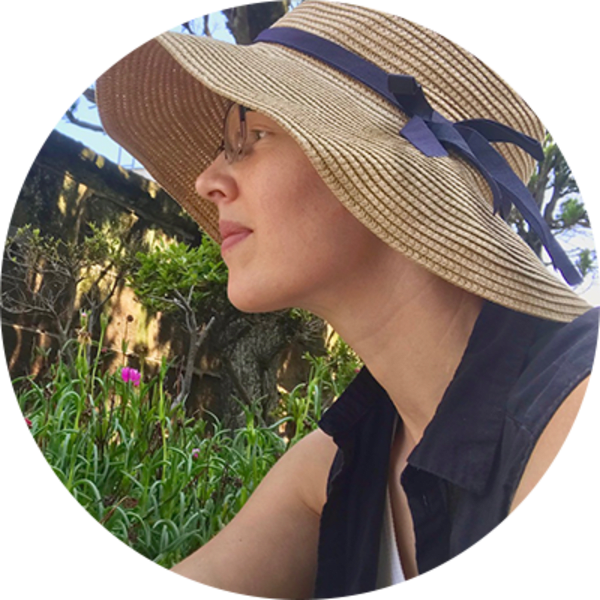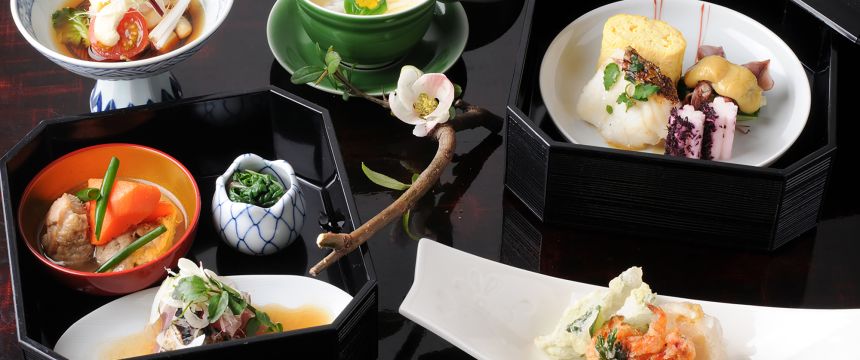Shiraoi and Kushiro Hokkaido Prefecture - Hokkaido and Onna and Chatan, Okinawa Prefecture - Okinawa
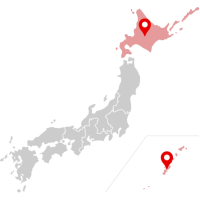
The Japanese archipelago is a rich brocade of regional cultures, dialects, and cuisines, and traveling the country from north to south unveils a new side of Japan with every turn in the road. Nowhere is this more evident than in the northernmost prefecture, Hokkaido, and the southernmost, Okinawa.
Both Hokkaido and Okinawa are home to indigenous people whose traditions and languages are distinct from those of people on Japan’s other islands. The Ainu people, who are recognized as the indigenous people of the northern Hokkaido, Sakhalin, and the Kuril Islands, and the Ryukyuan people, who are indigenous to southern Okinawa, possess cultures all their own—from attire and food to spiritual tradition and artisanal crafts.
As you explore Japan, be sure to go to the extreme north and the far south to immerse yourself in the incredible culture and cuisine of the Ainu and the Ryukyuans.
Discover a Different Side to Japan

For much of Japan’s history, Hokkaido and Okinawa were connected to Japan by trade but were not really a part of the country. In the north, the Ainu were hunters, fishers and gatherers, influenced by other northern indigenous peoples. In the south, the Ryukyu Kingdom flourished as a trading hub and tributary of China, and later, after being invaded by the Satsuma clan of Kyushu in the Edo period (1603–1867), it became a semiautonomous kingdom of Japan.

When these two regions were officially brought into the fold as prefectures of a rapidly modernizing Japan in the final decades of the nineteenth century, the country gained distinct cultures at both its northern and southern extremities. In the years since then, the traditions of both the Ainu and the Ryukyuans have ebbed, only to become a focus of cultural preservation efforts in recent decades. Now, in both Hokkaido and Okinawa, visitors and locals alike are encouraged to become acquainted with these two vibrant cultures of Japan.
Reclaiming Ainu Culture

Travel to Shiraoi on central Hokkaido’s southern shore, where the newly opened Upopoy National Ainu Museum and Park leads the way in the revitalization and preservation of Ainu traditions. Upopoy, which means “singing together in a large group” in Ainu, offers Ainu and non-Ainu people alike the chance to interact with many aspects of Ainu culture.
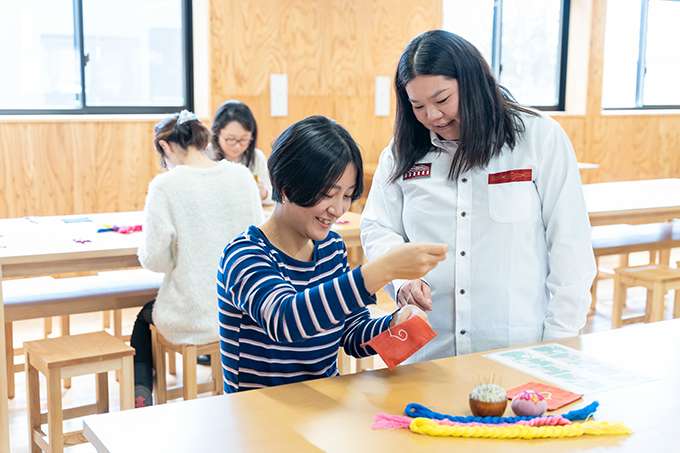
Explore Ainu arts at the center’s Crafts Studio, where you can learn all about wood carving and embroidery. At the Cultural Exchange Hall, marvel at Upopoy’s compelling multimedia presentation of Ainu myths, and enjoy performances of Ainu dance—inscribed on UNESCO’s Representative List of the Intangible Cultural Heritage of Humanity—music, and more.
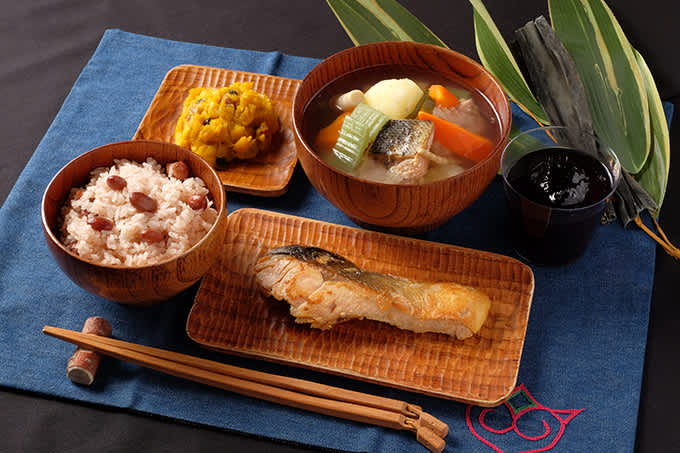
When hunger strikes, sample Ainu cuisine prepared traditionally or with a contemporary twist at one of the center’s three restaurants: HARU RAN NA Open Flame Dining and Cafe, HINNA HINNA KITCHEN EN, and Café RIMSE. In Ainu culture eating is a truly sacred act, with every last morsel considered a gift from nature. As you eat surrounded by the expansive nature of Hokkaido that the Ainu call home, you are sure to feel grateful to the land in much the same way.
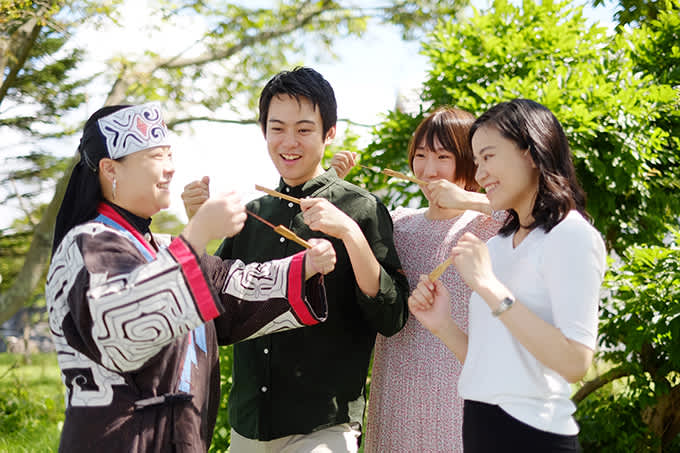
The center also encompasses an extensive outdoor area with trees and plants critical to Ainu culture and offers guided nature walks, where you’ll learn how the Ainu used plants for clothing, food, rituals, and housing. Be sure to wander the on-site village (kotan), where you can see traditionally constructed homes, try on traditional attire, and observe ceremonies and demonstrations important in Ainu culture.

To be truly in touch with the spirit of Japan, you must understand its diverse cultures. When it comes to the Ainu, Upopoy provides a perfect introduction.
Surround Yourself with Ainu Culture at Lake Akan
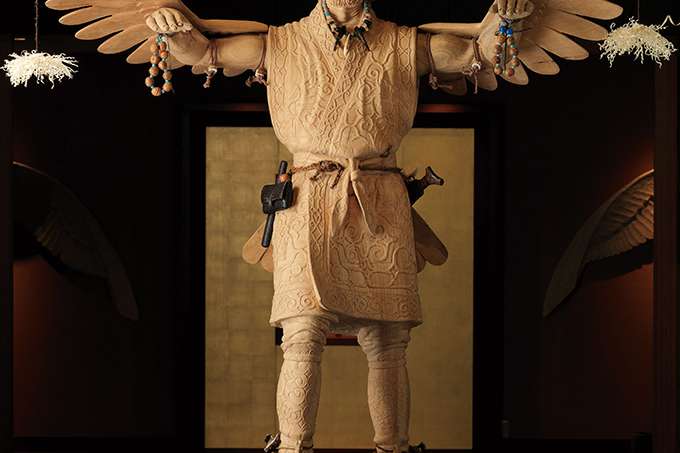
Continue learning about the Ainu with a stay at Lake Akan Tsuruga Wings, a hotel that not only uses the Ainu language in naming its facilities but incorporates elements of Ainu culture into its design. From the moment you enter the hotel, you’ll find yourself face-to-face with Ainu art—larger-than-life wood carvings by Ainu engraver Fujito Takeki (1934-2018) welcome you into the entrance lobby, while traditional attire and art grace hotel walls.
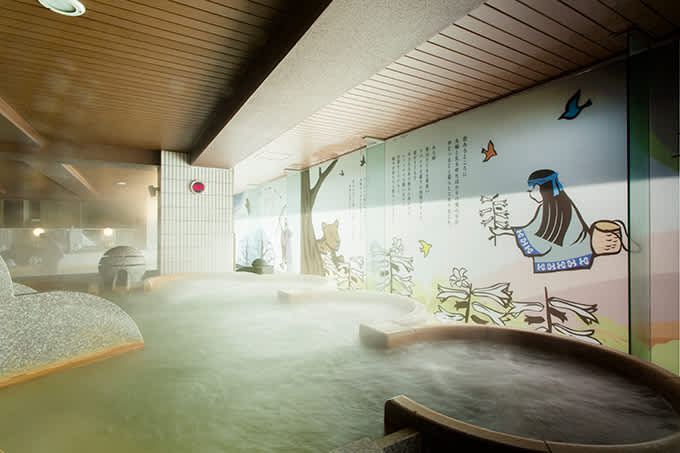
Even in the hot-spring area, bathers are greeted by Ainu culture in the form of illustrated legends unfolding across the walls. In the spa area, the high-temperature hot-stone sauna uses mugwort and bamboo grass, used by the Ainu to promote perspiration, in addition to other traditional herbs. Outside, carved totem poles rise high above the meticulously kept Akan Iomap Garden.

Not far from the Wings hotel, you’ll find the Akanko Ainu Kotan, a settlement where Ainu share their arts, crafts, and other traditions with the public. Be sure to attend one of the performances at the kotan’s theater—such as Akan Yukar “Lost Kamuy,” a combination of ceremonial dance, contemporary dance, and digital art that delves into the indispensable relationship of the Ainu with kamuy (spirit deities).
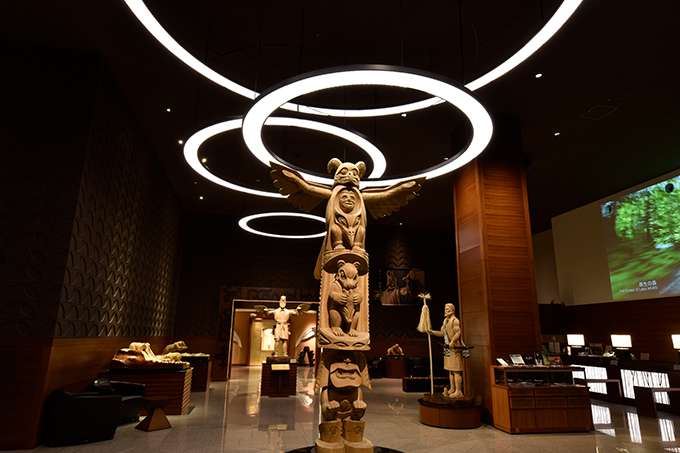
These are just a few of the ways that visitors can interact with one of Hokkaido’s indigenous cultures. Including a kotan (village) or Ainu cultural center in your itinerary is guaranteed to add another meaningful thread to your understanding of Japan.
Ryukyu Resurgence

At Ryukyu Mura, a re-created Ryukyuan village located in central Okinawa, the islands’ traditional culture is alive and well—and waiting for you. At workshops, make terra-cotta replicas of the islands’ ubiquitous shisa (guardian lions), try bingata (resist-dyeing), or pick up a three-stringed banjo-like sanshin and learn to strum a tune.

Be sure to catch the Michijune, a parade held as a memorial to one’s ancestors, and enjoy dances from across the islands with performers in the vibrant traditional attire of the Ryukyu Kingdom. Karate demonstrations and a shishimai (lion dance) with a wakuyu (lion handler) are also events to look forward to.

The village itself is filled with reconstructed houses from across the island group, some over two hundred years old and many designated by the Japanese government as Tangible Cultural Properties. In one of these houses, visitors can enjoy a traditional Okinawan dinner accompanied by music (please note that reservations are required).

Traditional and contemporary Okinawan cuisine can be found at Kijimuna Shokudo, a restaurant in Ryukyu Mura that serves taco rice, rafute (stewed pork with rice), and soki soba (Okinawan noodles with pork ribs), among other things.

At Ryukyu Mura, surrounded by the sights and sounds of the islands’ past, it’s impossible not to feel the Ryukyuan spirit that suffuses the atmosphere. Happily, you will find that same spirit elsewhere in the islands too.
Ryukyuan Resort

Soak up even more Ryukyuan spirit by spending the night at Rinken’s Hotel. At this hotel near the beach, you’ll have access to Okinawa’s incredible ocean as well as its music, dance, and cuisine.

Located next to the hotel and part of the hotel-performance complex is Kalahaai, an entertainment restaurant where you’ll be treated to Ryukyuan-music performances by the Rinken Band, popular for their fusion of traditional and pop music, and Tink Tink. Lose yourself in the unique rhythms, the powerful drums, and the sounds of Uchinaguchi, a Ryukyuan language.

Don’t forget to fill up on traditional Ryukyuan and contemporary Okinawan cuisine while visiting Japan’s southern islands. At Rinken’s Kitchen, you’ll find a wealth of delicious Ryukyuan and Okinawan meals, homecooked as they have been for generations using seasonal vegetables and other local ingredients. Feast on Okinawan-style tofu, pork dishes, the stir-fried dishes chanpuru and irichi, and dishes made with local specialties such as taimo (a variety of taro), and local fish.

Discovering Japan’s regional cultures will rank high among the cherished memories of your travels through the archipelago. In particular, exploring the Ainu culture of Hokkaido and the Ryukyuan culture of Okinawa will provide unexpected and unforgettable moments as you explore the mosaic that is modern Japan. Make the most of your time in the country by traversing it from north to south or vice versa, seeking out its many hidden gems and delighting in the diversity of its fabric.
Contact Information
Upopoy
2-3 Wakakusa-cho, Shiraoi, Shiraoi District, Hokkaido 059-0902
Lake Akan Tsuruga Wings
4-6-10 Akan-cho, Akanko Onsen, Kushiro, Hokkaido 085-0467
Ryukyu Mura
1130 Yamada, Onna, Kunigami District, Okinawa 904-0416
Rinken’s Hotel
8-11 Mihama, Chatan, Nakagami District, Okinawa 904-0115
How to Get There
Upopoy is located in Shiraoi on the southern coast of central Hokkaido. It can be easily accessed from New Chitose Airport, which is served by direct flights from many domestic airports. From the airport, Upopoy can be reached by train in under one hour.
The resort hotel Lake Akan Tsuruga Wings is located in Kushiro on the shores of Lake Akan in eastern Hokkaido. The closest airport is Tancho Kushiro Airport, which is served by direct flights from several domestic airports. From the airport, it takes approximately one hour and thirty minutes by bus to reach Lake Akan Tsuruga Wings.
Ryukyu Mura is located in Onna in the central area of Okinawa Island, the largest of the Okinawan islands. The closest airport is Naha Airport, which is served by direct flights from a number of domestic airports. It takes approximately one hour by bus to reach Ryukyu Mura from Naha Airport.
Rinken’s Hotel is located in Chatan, south of Onna but still in the central area of Okinawa Island. It takes approximately one hour and twenty minutes by bus to reach Rinken’s Hotel from Naha Airport and approximately thirty-five minutes by bus from Ryukyu Mura.
Recommended Itineraries
Hokkaido is a vast prefecture that can be enjoyed in many ways. A short jaunt down the coast from Shiraoi will bring you to Noboribetsu, one of Hokkaido’s best-known hot-spring districts. Take advantage of the location of the resort hotel Lake Akan Tsuruga Wings to get back to nature with forest-bathing along hiking trails, or cruise the lake by boat while admiring the scenery. While on Okinawa Island, enjoy swimming or snorkeling at the beaches, explore Naha’s main street, Kokusai Dori, or spend a few hours in quiet reflection at the Peace Memorial Park. If time allows, add a side trip to one (or more!) of Okinawa’s other islands, which can be reached by plane or ferry.
Related Links
Hokkaido Official Tourism Website (English)
Shiraoi Tourist Information (Japanese)
National Ainu Museum and Park (Upopoy) (English)
Upopoy National Ainu Museum and Park (English)
Lake Akan Tsuruga Wings (English)
Official Okinawa Travel Guide (English)
Map
Featured Cuisine
Owing to the Ainu’s traditional lifestyle of hunting and gathering, Ainu cuisine is strongly influenced by the seasons and geographic region of each kotan (village). Fish such as salmon and trout; land animals such as deer, bear, hare, and fox; and berries, leaves, nuts, root vegetables, and other plants are important ingredients in traditional Ainu cuisine. Cooking methods include stewing meats with vegetables and broiling fish. In the past, seasoning was mostly limited to animal fat, fish oils, and salt.
Traditional Ryukyu cuisine was influenced by Okinawa’s climate and location as well as its position as a trade hub for various Asian countries. Influenced by the Japanese mainland as well as China, Korea, and various Southeast Asian countries, Ryukyuan cuisine became a fusion of sorts with a base of locally available ingredients. Common cooking methods include steaming, stir-frying, and stewing. Ingredients include bitter melon, green papaya, taimo (taro), pork, and goat; and from the sea, seaweed such as mozuku and umibudo, fish, shellfish, and sea snake.
-
Author
Author: Helen
Helen hails from a small town in Central Canada. Shortly after completing an honors degree in history, a desire to study karate in its birthplace drew her to Japan. Since arriving in 2006, she has earned her second dan in Goju-ryu karate, fallen head-first into Japanese culture by way of cross-cultural marriage, and written about Japan for a variety of publications. She loves traveling by Shinkansen, curling up under a heated kotatsu blanket, and eating anything with mochi.
All information is correct as of the time of writing.
Please check for the latest information before you travel.




















































